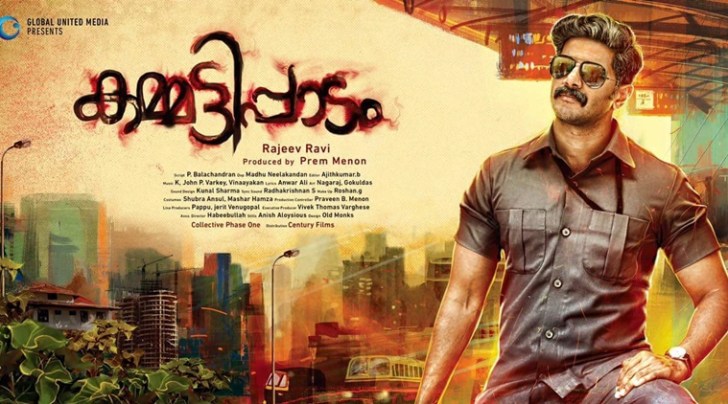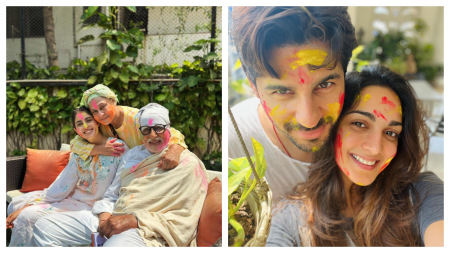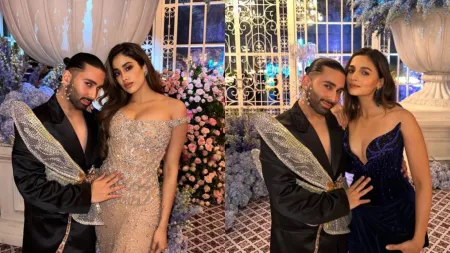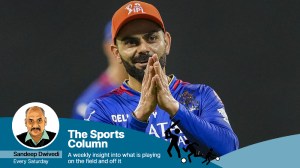- India
- International
Kammatipaadam movie review: Dulquer Salmaan shines in a raw and realistic cut into the brutally buried history of Dalits
Kammatipaadam movie review: Rajiv Ravi has dismantled all conventional concepts of Malayali aesthetics by capturing the unadulterated beauty of black skin through characters who portrayed the lives of Dalits
 Kammatipaadam movie review: Dulquer Salmaan shines as ‘Krishnan’, but it was the new comer Manikandan who lived the pulsating character of Balettan with perfect detailing of body language and gestures
Kammatipaadam movie review: Dulquer Salmaan shines as ‘Krishnan’, but it was the new comer Manikandan who lived the pulsating character of Balettan with perfect detailing of body language and gestures
“Puzhu pulikal pakki parunthukal kadalanakal kaatu roopangal, pala kalam pala daivangal, pulaydikal nammalummoppam,narakichu porukkumividdam bhoolokam thirumakane, kalahichu marikkunnividam ihalokam en makane.” (From worms to tigers , from insects to eagles, from elephant seals to all creatures of wild and different gods from different times along with we polayadis lead a dreaded survival, in this world, we struggle and die in this world, my beloved son.”
These touching lines from a sound track in ‘Kammatipaadam’ carry along with it the mood of the movie and director Rajiv Ravi’s emphasised dissent against institutional elimination of marginalised societies, especially Dalit communities, from the corporate motivated agendas in the name of development. The terrifying fact that ‘Polayadi’, a word which at present times, is conceived as a highly offensive slang in Kerala, actually evolved from the word ‘Pulayar’, a Dalit community, itself shows how the authoritarian class of Kerala and elsewhere in India used their cunningly cruel measures to inflict submissiveness among Dalit communities. Director Rajiv Ravi, without any inhibitions, has visualised this historically deep-rooted casteism in the so-called progressive land of Kerala in a crude and brash manner.
The film rolls out through ‘Krishnan’ (Dulquer Salmaan), who returns to the city of Kochi in search of his childhood friend ‘Ganga’(Vinayakan) from where flashbacks show how manipulative forces used and discarded the true inhabitants of Ernakulam according to their greedy needs. ‘Kammatipaadam’ tells a story of the transformation of Ernakulam, a concrete jungle at present, from its lush green serene past, through a history of bloodshed and violence.
[related-post]
The innocent friendship of a middle-class Hindu boy ‘Krishnan’ with a Dalit boy ‘Ganga’ and his family, forms the crux of the movie. ‘Krishnan’ along with ‘Ganga’ and some other boys from the neighbourhood are exposed to violence at a very small age. Inspired by the heroics and manliness of ‘Ganga’s elder brother ‘Balettan’, ‘Krishnan’ and his gang indulge in all kind of unlawful activities as they grow up. The film closely monitors the development of the characters through some hard-hitting incidents that include ‘Krishnan’ turning into a complete outlaw by murdering a policeman during his adolescence. A scene where ‘Balettan’ argues with his grandfather over his deeds and complains about his forefathers’ ideologies being useless at the times of transit is an introspective point that urges to question the false images of development which trivialised traditional values and beliefs held by Dalits, thus creating a disoriented generation from the Dalit community, who were manoeuvred to violence by the rich. ‘Krishnan’ on his quest to find his missing friend, relives through his past of backlash and walks once again upon those bloodied roads to find the truth about ‘Ganga’, which shapes the thread of the movie.
Rajiv Ravi has dismantled all conventional concepts of Malayali aesthetics by capturing the unadulterated beauty of black skin through characters like ‘Ganga’, ‘Balettan’ and others who portrayed the lives of Dalits. The director has continued to use his anarchic concepts of visualisation, which include shaky shots, blurred frames and sometimes abrupt sequences. The realistic and daring approach of Rajiv Ravi deserves standing ovation at times when the paper tigers in this industry still fear to come up with something different from the old mould.

Unlike Rajiv’s last two movies ‘Annayum Rasoolum’ and ‘Njan Steve Lopez’, which were furnished in a minimalistic fashion, in ‘Kammatipaadam’, the director chooses an exhibitionist angle with some commercial ingredients, including some well-crafted stunts. The female characters in the movie looked artificial owing to their unrealistic make-up that stood uneasily odd when compared to the entire movie. The climax is another aspect where the director and script writer P Balachandran could have improvised, which came in as a expected revenge routine, like a dramatic dome to a realistic narrative structure.
The cast become an effective tool under this exceptional director, as Rajiv used all his actors to full effect irrespective of the importance in the film. Dulquer Salmaan shines as ‘Krishnan’, but it was the new comer Manikandan who lived the pulsating character of Balettan with perfect detailing of body language and gestures and not to miss Vinayakan, who donned the tormenting role of ‘Ganga’. John P Varkey’s songs instilled the mood of a community’s anguish and agony, especially the title song ‘Para Para’ and ‘Puzhu Pulikal’ song.
The movie, rewarded with an A certificate owing to its unmasked violence, need not be barred from our children, as elders who watch this movie, if hit by any sense of guilt feel the need to impart the knowledge of historically irreversible mistakes done to Dalits and other marginalised communities in our country.
Photos
Must Read
Apr 20: Latest News
- 01
- 02
- 03
- 04
- 05









































